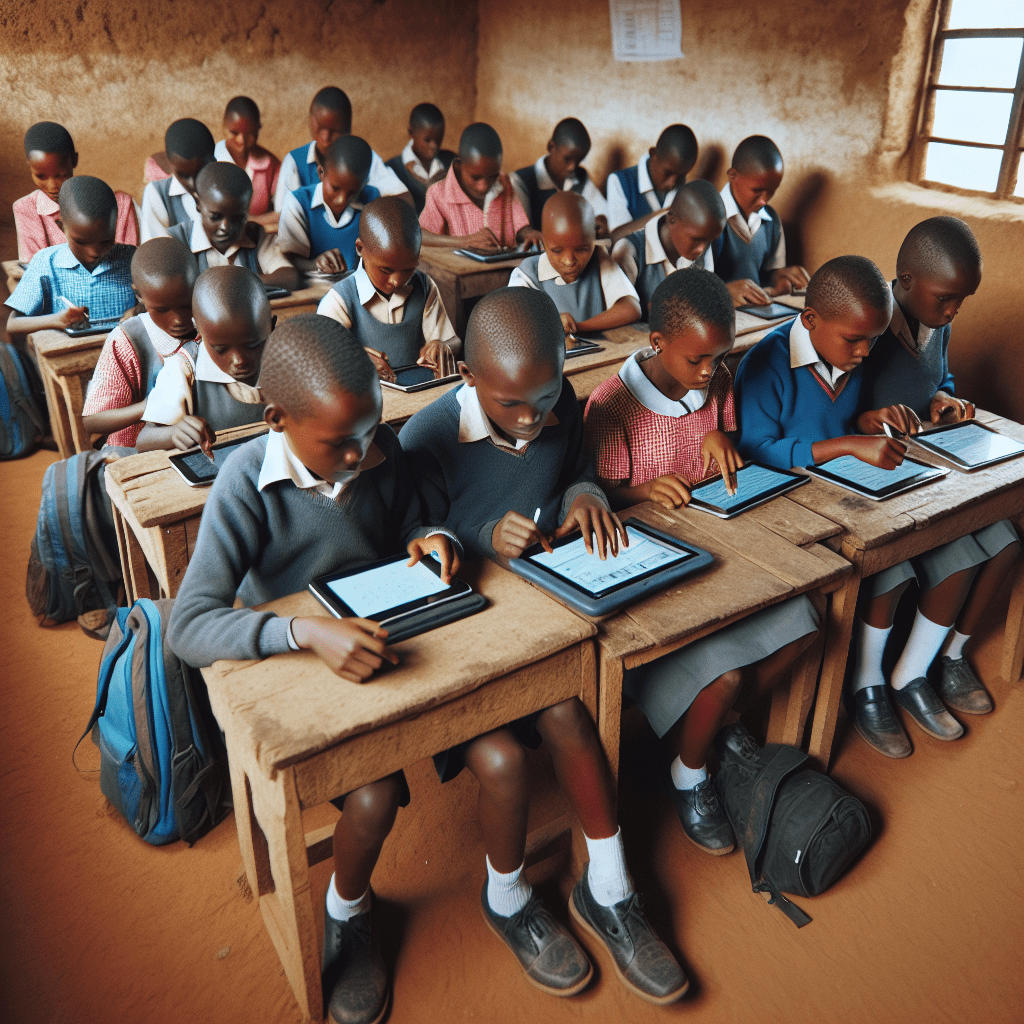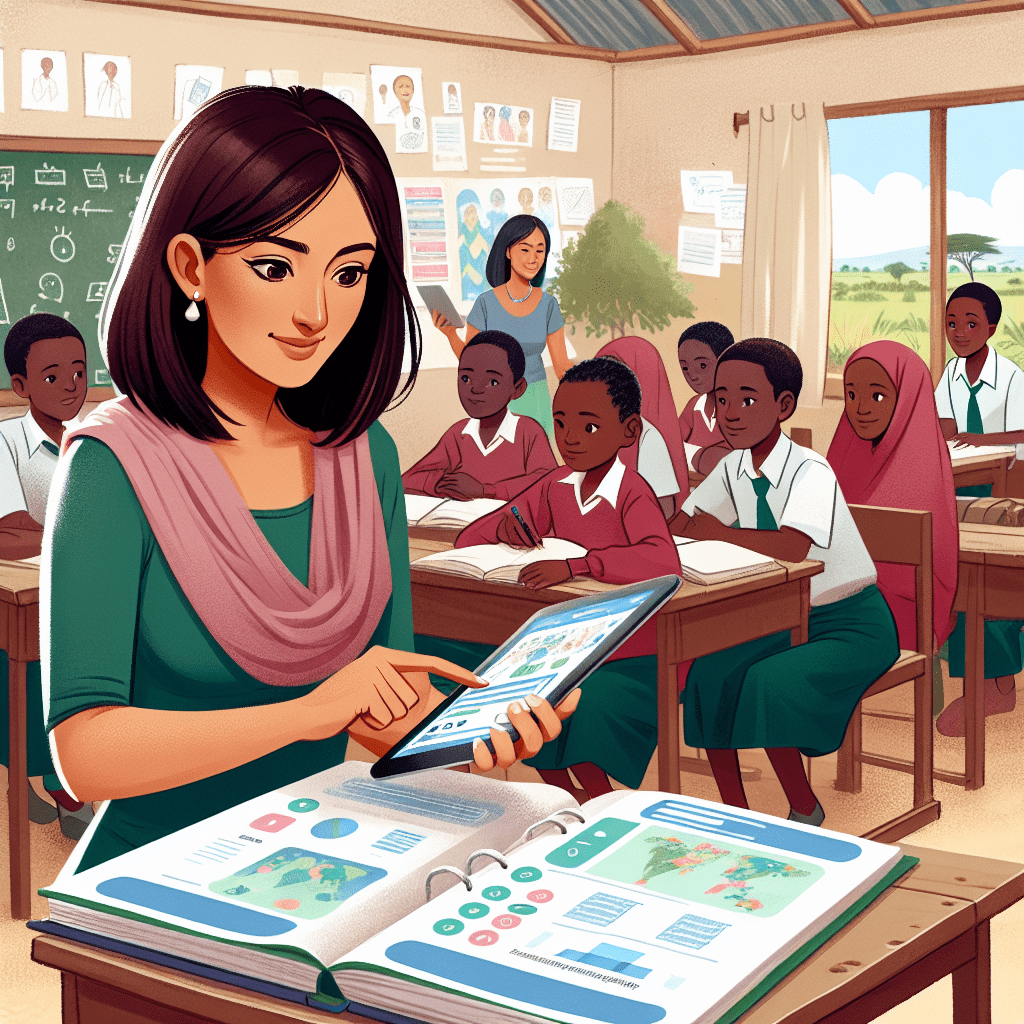Table of Contents
In the heart of rural Kenya, a quiet revolution is underway. Far from the bustling cities and tech hubs, innovative educators and entrepreneurs are harnessing the power of artificial intelligence (AI) to bridge the digital divide and empower young learners. Despite significant challenges posed by limited infrastructure and resources, these pioneering initiatives are demonstrating the transformative potential of AI in enhancing access to quality education and preparing students for the digital future.
The Educational Landscape in Rural Kenya
To fully appreciate the impact of AI in rural Kenyan education, it is essential to understand the context and challenges faced by communities in these areas. Many rural schools struggle with inadequate infrastructure, including a lack of electricity, internet connectivity, and modern learning resources. Classrooms are often overcrowded, with a high student-to-teacher ratio, making personalized attention and support difficult.
Moreover, the digital divide between urban and rural areas is significant. While urban centers benefit from greater access to technology and digital resources, rural communities often lag behind. This disparity can limit students’ exposure to digital literacy skills and hinder their ability to compete in an increasingly technology-driven world.

Leveraging AI for Personalized Learning
One of the key areas where AI is making a difference in rural Kenyan education is personalized learning. By leveraging machine learning algorithms and adaptive learning platforms, educators can create tailored learning experiences that cater to each student’s unique needs and abilities.
For example, AI-powered learning apps can assess a student’s knowledge level, identify areas of strength and weakness, and provide targeted content and exercises to address specific learning gaps. This personalized approach ensures that students receive the support they need to excel, regardless of their starting point or the limitations of their physical classroom environment.
Overcoming Language Barriers with AI Translation
Language diversity is another challenge faced by many rural Kenyan schools. With over 60 indigenous languages spoken in the country, students often struggle to access educational content in their native tongue. This language barrier can hinder comprehension and engagement, particularly in subjects like science and mathematics.
AI-powered language translation tools are helping to bridge this gap. By leveraging natural language processing and machine translation, educational content can be automatically translated into various local languages, making it more accessible and relatable to students. This not only enhances understanding but also promotes cultural inclusivity and preserves the rich linguistic heritage of rural communities.

Empowering Teachers with AI-Assisted Tools
In addition to directly benefiting students, AI is also empowering teachers in rural Kenya. With limited resources and high workloads, teachers often struggle to provide individualized attention and support to every student. AI-assisted tools can help alleviate this burden and enhance teaching effectiveness.
For instance, AI-powered grading systems can automatically evaluate assignments and provide instant feedback, saving teachers valuable time and enabling them to focus on more strategic aspects of teaching. AI can also assist in lesson planning, suggesting relevant resources and activities based on student performance data and curriculum requirements.
Furthermore, AI-driven professional development platforms can connect rural teachers with mentors, experts, and peers from around the world, facilitating knowledge sharing and collaborative learning. This global network of support can help teachers stay up-to-date with the latest pedagogical practices and adapt to the evolving needs of their students.
Addressing Infrastructure Challenges with Offline AI Solutions
One of the most significant hurdles in implementing AI in rural Kenyan education is the lack of reliable internet connectivity. However, innovative solutions are emerging to overcome this challenge.
Offline AI technologies, such as edge computing and pre-trained models, enable educational apps and platforms to function effectively even in low-connectivity environments. By processing data locally on devices and synchronizing with central servers when connectivity is available, these solutions ensure that students and teachers can access AI-powered tools and resources regardless of internet availability.

Collaborations and Partnerships Driving Change
The success of AI in rural Kenyan education is not just a result of technological advancements but also of the collaborations and partnerships that bring these solutions to life. Governments, NGOs, tech companies, and local communities are coming together to drive change and ensure that the benefits of AI reach even the most remote areas.
For example, the Kenya Ministry of Education has partnered with international organizations to provide digital devices and AI-powered learning platforms to rural schools. Private sector companies are also investing in the development of localized AI solutions that cater to the unique needs and challenges of rural communities.
These collaborative efforts are crucial in ensuring the sustainability and scalability of AI initiatives in rural education. By leveraging the strengths and resources of various stakeholders, Kenya can create a robust ecosystem that supports the long-term integration of AI in education and empowers future generations.
The Future of AI in Rural Kenyan Education
As AI continues to evolve and become more accessible, its potential to transform rural education in Kenya is immense. From personalized learning and language translation to teacher support and offline solutions, AI is opening up new possibilities for students and educators alike.
However, it is important to approach the integration of AI in education with a holistic and inclusive mindset. Efforts must be made to ensure that AI solutions are not only technologically advanced but also culturally relevant, socially responsible, and aligned with the values and aspirations of rural communities.
By embracing AI as a tool for empowerment and equality, Kenya can pave the way for a future where every child, regardless of their geographic location or socioeconomic background, has access to quality education and the opportunity to thrive in the digital age. The journey may be challenging, but the rewards—a more equitable, innovative, and resilient education system—are well worth the effort.
As Nelson Mandela once said, “Education is the most powerful weapon which you can use to change the world.” With AI as an ally, rural Kenyan education is poised to unlock the potential of a generation and shape a brighter future for all.